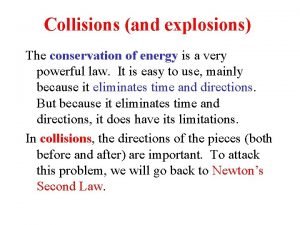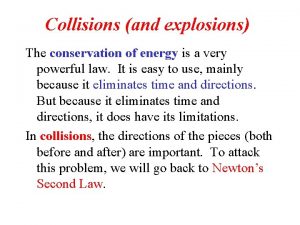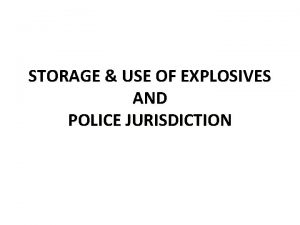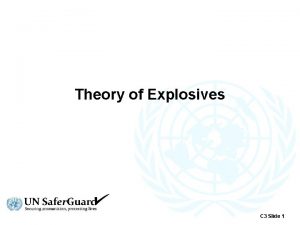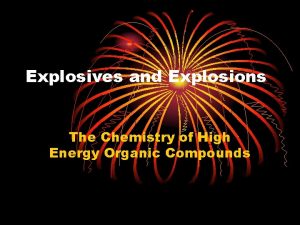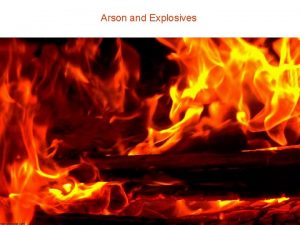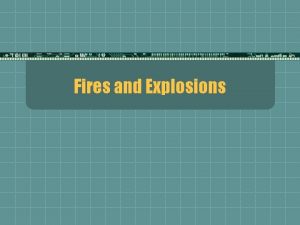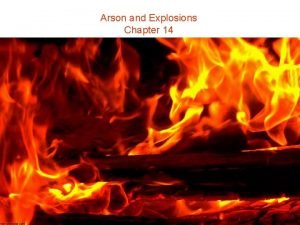Discussion Explosions and Explosives Explosions and Explosives An









- Slides: 9

Discussion Explosions and Explosives

Explosions and Explosives �An explosion is a chemical or mechanical action caused by combustion, accompanied by creation of heat and rapid expansion of gases. �The distinguishing characteristic of an explosion is the rapid rate of reaction. �The sudden buildup of expanding gas pressure at the origin of the explosion produces the violent physical disruption of the

Explosions and Explosives �Explosives are substances that undergo a rapid exothermic oxidation reaction, producing large quantities of gases. �This sudden buildup of gas pressure constitutes an explosion. �Detonation occurs so rapidly that oxygen in the air cannot participate in the reaction, so many explosives must have their own source of oxygen.

Explosions and Explosives �Detonation refers to the creation of a supersonic shock wave within the explosive charge. �This shock wave breaks the chemical bonds of the explosive charge, leading to the instantaneous buildup of heat and gases.

Low Explosives �Low Explosives decompose relatively slowly at rates up to 3000 ft/sec. � Examples include black powder, smokeless powder, and gas-air mixtures. �The only ingredients required for a low explosive is fuel and a good oxidizing agent.

High Explosives �High Explosives decompose very rapidly at rates from 3000 fps to over 25000 fps. � Examples include dynamite, TNT, PETN, and RDX. �There are two groups: primary and secondary.

Primary High Explosives �Primary High Explosives are very sensitive to heat, shock or friction, and normally detonate violently instead of burning. �They are used to detonate other explosives and are referred to as “primers. ”

Secondary High Explosives �Secondary High Explosives are relatively insensitive to heat, shock or friction, and normally burn rather than detonate in small quantities in open air. �These are the high explosives used in commercial and military blasting.

 Collisions and explosions
Collisions and explosions Collisions
Collisions Applications of fractional distillation
Applications of fractional distillation Xylem heat exchanger
Xylem heat exchanger Questioning and discussion techniques in the classroom
Questioning and discussion techniques in the classroom Tuesdays with morrie comprehension questions answers
Tuesdays with morrie comprehension questions answers The cask of amontillado answer
The cask of amontillado answer Results and discussion in research
Results and discussion in research Results and discussion in research
Results and discussion in research Night discussion questions chapter 4
Night discussion questions chapter 4
